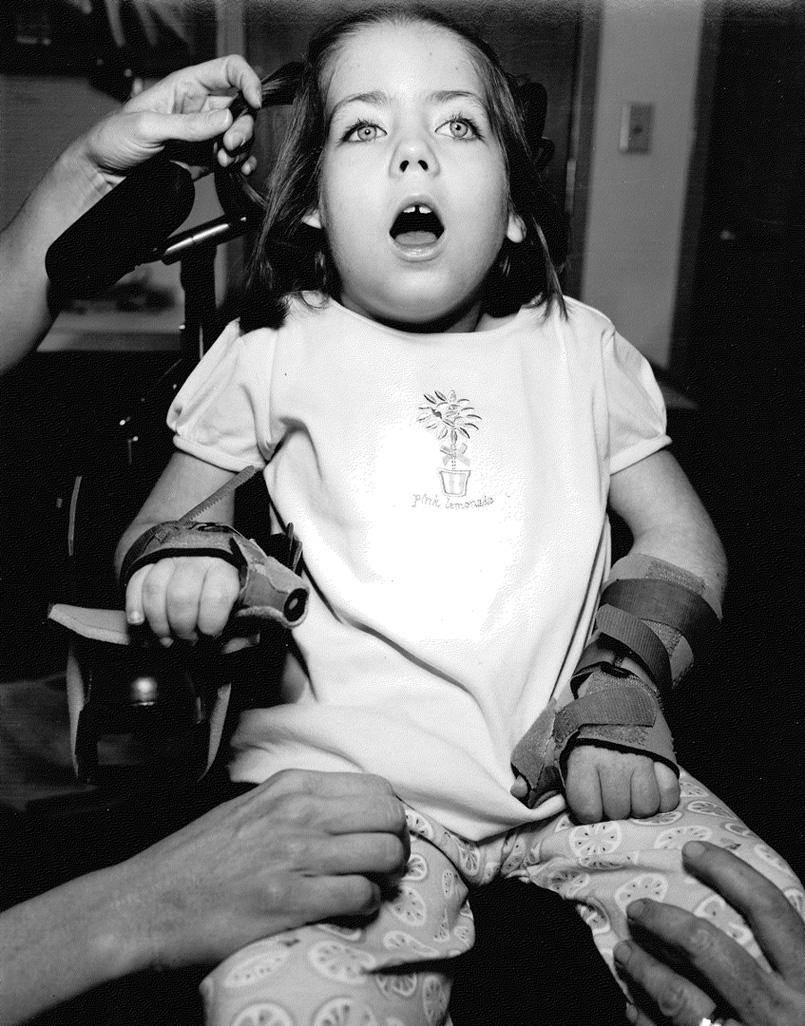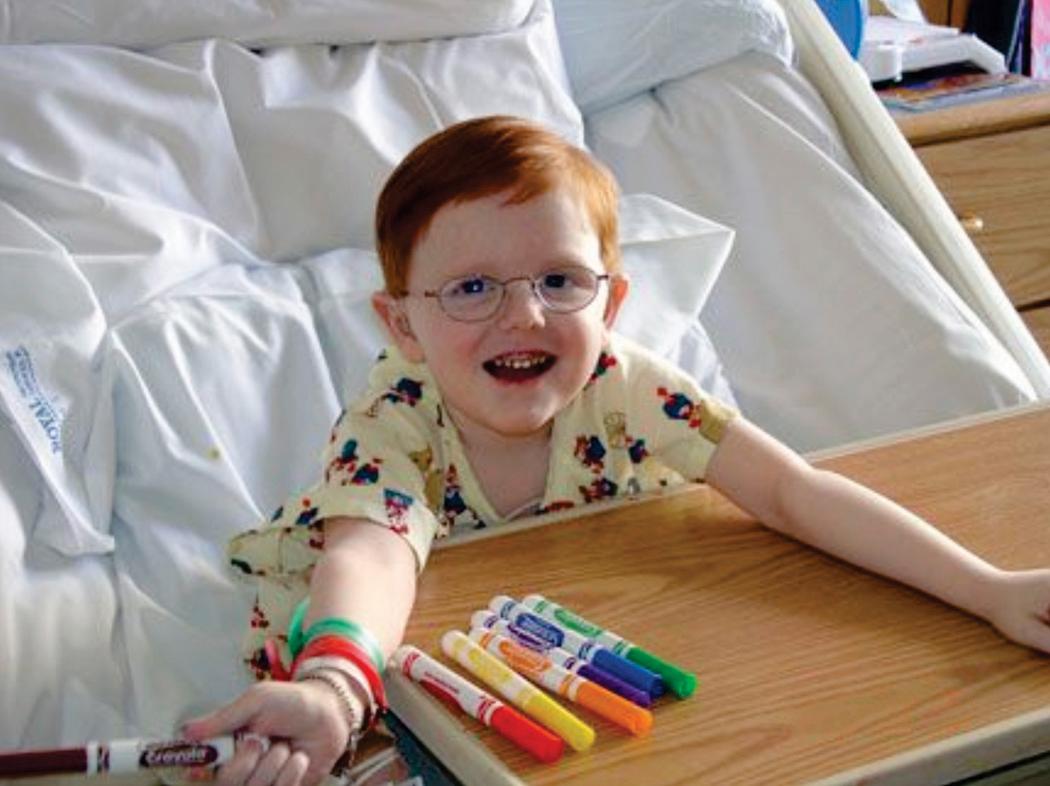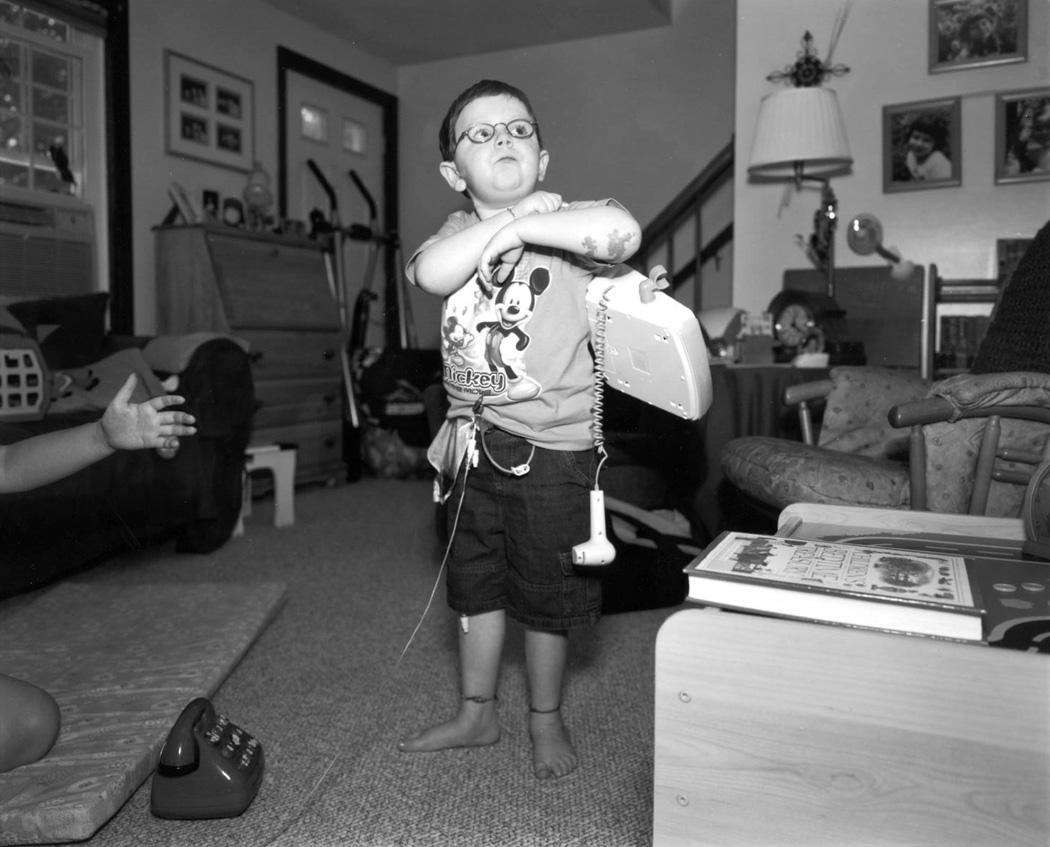Physical Address
304 North Cardinal St.
Dorchester Center, MA 02124
Matthew was a red-haired little boy suffering from congenital microvillus inclusion disease, an autosomal recessive disorder that is characterized by intestinal failure and often treated with multivisceral organ transplantation. This patient and his family experienced a great deal of suffering. When he was 5 years old, after a year-long hospitalization and careful consideration of prognosis and establishment of realistic goals of care, his family decided to bring him home despite concerns for the complexity of his care. He was discharged on multiple medications including continuous opioid infusion and parenteral nutrition under the care of the local hospice and palliative care team. Medical care continued at home as an integral aspect of a normal family life. His last months included a trip to a Nascar race, visits by a local fireman, and a full array of school services. Most importantly he was wrapped in the love of his two sisters, parents, and grandparents through his death (Figs. 4-1 to 4-3).





The relationship between clinicians and families is the cornerstone of quality care for the child with a life-threatening illness and his or her family. The bond of trust that exists among clinicians, pediatric patients, and their families is vital to the process of caring. The development of this relationship is greatly promoted if the clinician has knowledge of the person and family who are the focus of his or her care. Healthcare providers must create an open, nonjudgmental atmosphere in which vulnerable persons can feel free to share their experiences. Demonstrating empathy and a personal interest in the well-being of the patient and their family leads to a sense of connection and provides the foundation for an effective therapeutic alliance.
Understanding the patient's and family's beliefs, values, hopes, wishes, expectations, fears, and worries is crucial for clinicians who strive to create a plan of care with their patients. Clinicians must be willing to listen, empathize, solve problems, and encourage life-affirming events with patients and families as they face the challenges associated with a life-threatening illness. Misunderstandings and frustrations more often occur when clinicians offer treatment options without understanding the feelings, thoughts, and underlying themes that guide the patient's and family's decision-making process. A sample of exploratory responses that may be used in communicating with children and families is included in Table 4-1 .
| Lila is 10 years old and has a progressive neurodegenerative disorder leading to severe developmental delay, blindness, feeding intolerance, poor swallowing coordination, recurrent aspiration pneumonias, and spastic quadriplegia ( Fig. 4-4 ). Lila is an integral member of her family and enjoys toys and activities that provide tactile, visual, and auditory stimulation. Lila lives with her parents, Dana and Robert, and her older brother, Joe ( Fig. 4-5 ). |
| Communication theme | Exploratory questions | Illness experience | Parental responses |
|---|---|---|---|
| Beginning the conversation |
|
Lila's parents are most concerned about her worsening respiratory condition and the possible need for frequent hospital admissions in the winter. They have questions about placement of a tracheostomy tube and whether it would be beneficial. Parents want to maintain normalcy for the older brother. Parents are exhausted and questioning how to continue caring for their daughter and son. |
|
| Beliefs and values |
|
|
|
| Hopes and wishes |
|
Lila's parents understand the serious nature of her condition. They want to maintain her quality of life by treating illnesses she will most likely recover from. They want her to be comfortable and able to participate in family activities. | Dana: “We know there is no cure. We hope to have her for as long as possible, as healthy as possible.” |
| Sadness and depression |
|
|
|
| Fear and anxiety |
|
Her family believes that Lila's previous surgery was associated with onset of further neurological decline and for that reason they deferred recommended hip surgery for years. | Dana: “If Lila had the surgery would she be able to come off the breathing machine? They told us she probably wouldn't live past 2 years old. I wonder how much longer she will live. I just do not want to put her at risk for complications that could make her dependent on machines.” |
An essential part of establishing a therapeutic alliance is regular meetings with the patient and his or her family in which issues outlined in this chapter are discussed. Such discussions should be planned with care. For example, adequate time for in-depth conversation should be allotted, a private setting should be arranged, and the presence of both parents and/or others who are identified as primary supporters should be ensured. By listening respectfully and building on the parents' knowledge, the interdisciplinary team (IDT)—which is typically composed of doctors, nurses, social workers, child life specialists, chaplains, and psychologists—can tailor information and educate the family about treatment options and other issues of relevance. Recommendations may be made based on the existing evidence, on realistic goals, and within the child's and family's psychosocial and spiritual context. Elements of anticipatory guidance in the palliative care setting are discussed in the following section and suggested themes are presented in Box 4-1 .
Engage in effective communication with members of the care team
Ask about cultural, ethnic, religious, familial beliefs and values
Establish realistic expectations during conversations with parents about the patient's prognosis
Identify distress and discuss the need for support in making difficult decisions about care
Establish goal-directed treatment options, such as cure, prolongation of a good quality life, and comfort at the end of life
Benefit vs. burden of invasive procedures, including mechanical ventilation, tracheostomy, cardiopulmonary support, cardiopressors, aimed at prolonging life artificially in an intensive care unit setting
Use of other interventions aimed at prolonging life artificially, such as chemotherapy, transfusion of blood products, antibiotics, artificially provided hydration and nutrition, CPAP and BIPAP
Escalation of comfort medications, such as morphine, benzodiazepines, antiemetics
Personal goals that may influence decision making and plan of care—comfort, suffering, quality of life
Recognize and convey that there may be no realistic chance of cure early in the illness trajectory or that there may be continued uncertainty of the illness trajectory
Assist in reaching a consensus as a family about crucial decisions
Identify in advance those issues that may need clarification by the treating physician
Offer to talk with patients and their siblings about dying and death
Help patients and families make informed decisions and avoid decisional regret. Provide medical recommendations as appropriate
Support parents in their goal of being the best parents possible
Ethical and legal considerations about the following should be discussed:
Do Not Resuscitate orders
Advanced directives and other care-planning documents
Appointment of a healthcare agent
Appointment of a surrogate decision-maker
Balance the legal presumption of incompetence of minors with the mature adolescent patient's moral right to participate in care decisions
Address questions about withholding or withdrawing treatment with curative intent for reasons of conscience
Formulate a consistent response from physicians and the institution to requests for treatment considered to be medically inappropriate
Provide access to the institutional Ethics Committee to help resolve conflict
Alert the care team to the patient's comfort needs and level of function
Identify and address the symptoms of most concern to the patient and family
Inform the family about the child's physical and psychological symptom burden at the end of life and what to expect
Provide access to expert symptom control, including pain or palliative care teams, if needed
Provide comfort medications and access to a symptom control kit for home use
Address opioid myths of physical dependence, tolerance, addiction, and pseudo-addiction, decreased respirations equated with hastening of death
Address questions about alternative and complementary therapies
Discuss the family's emotional, social, and spiritual needs with the care team
Make available interdisciplinary psychosocial and spiritual support to the family
Provide culturally sensitive care
Inform families about community resources and help access these resources
Discuss death and dying with members of the care team
Provide coordinated services and promote collaboration among members of the IDT
Provide continuity of information and relationships throughout the illness trajectory and across care settings
Discuss the option of hospice care early during the course of the illness
Conduct family care conferences and IDT meetings
Provide access to expert symptom control
Provide access to interdisciplinary psychosocial and spiritual support
Allow the child and family to participate in the decision-making process
Discuss with the family end-of-life care preferences including the desired location of death
Discuss the patient's right to die in a familiar setting that is as free of burdens as possible
Query the family about funeral arrangements and possible autopsy and organ tissue donation
Help the family build the child's legacy
Reinforce positive role of parents and participation of child in leading the way in the journey of the illness
Focus on the child's and family's goals and comfort at the end of life
Encourage self-care of parents and attention to any sibling issues
Provide access to psychosocial and spiritual support
Participate in staff debriefing and support
Become a Clinical Tree membership for Full access and enjoy Unlimited articles
If you are a member. Log in here